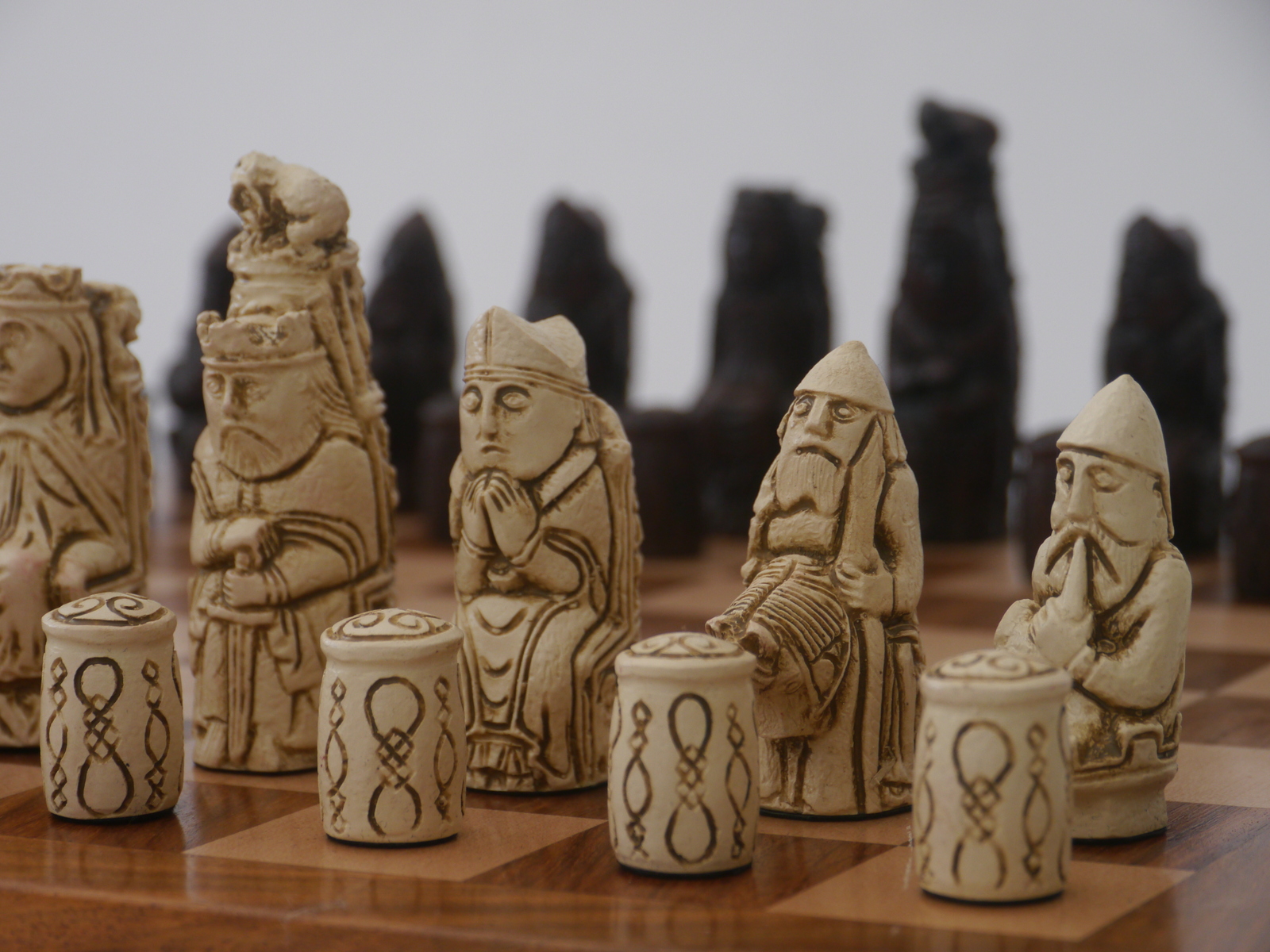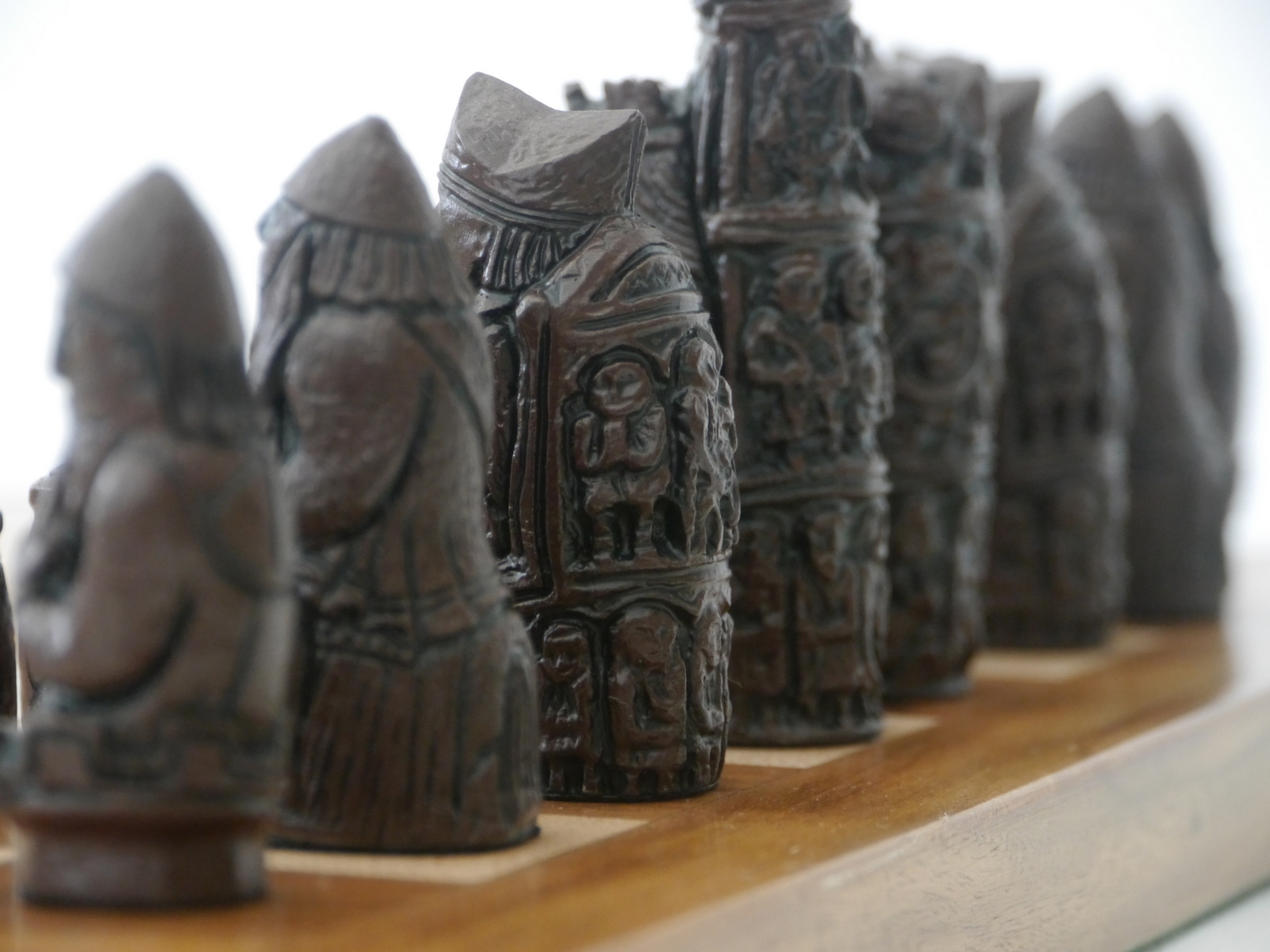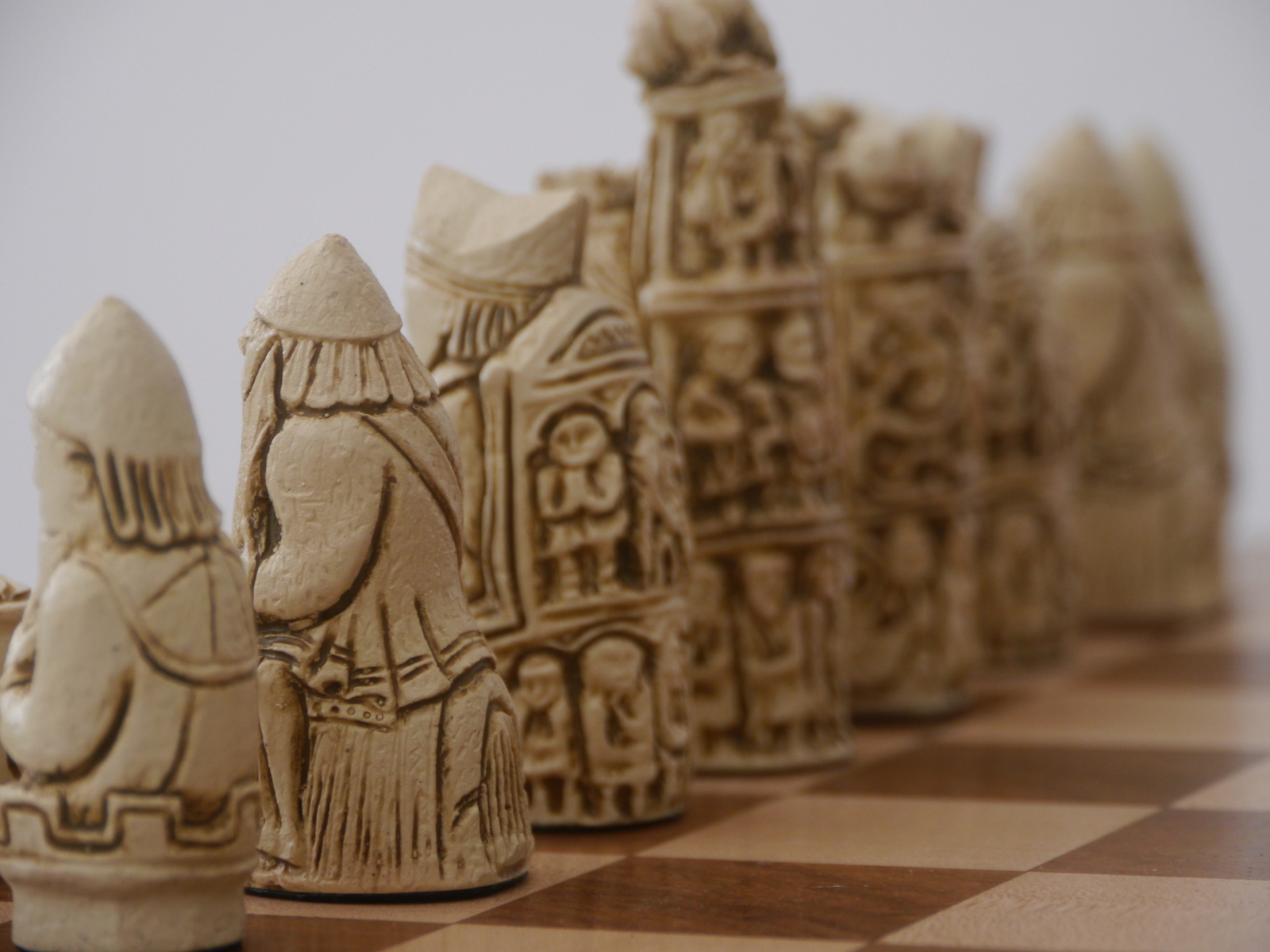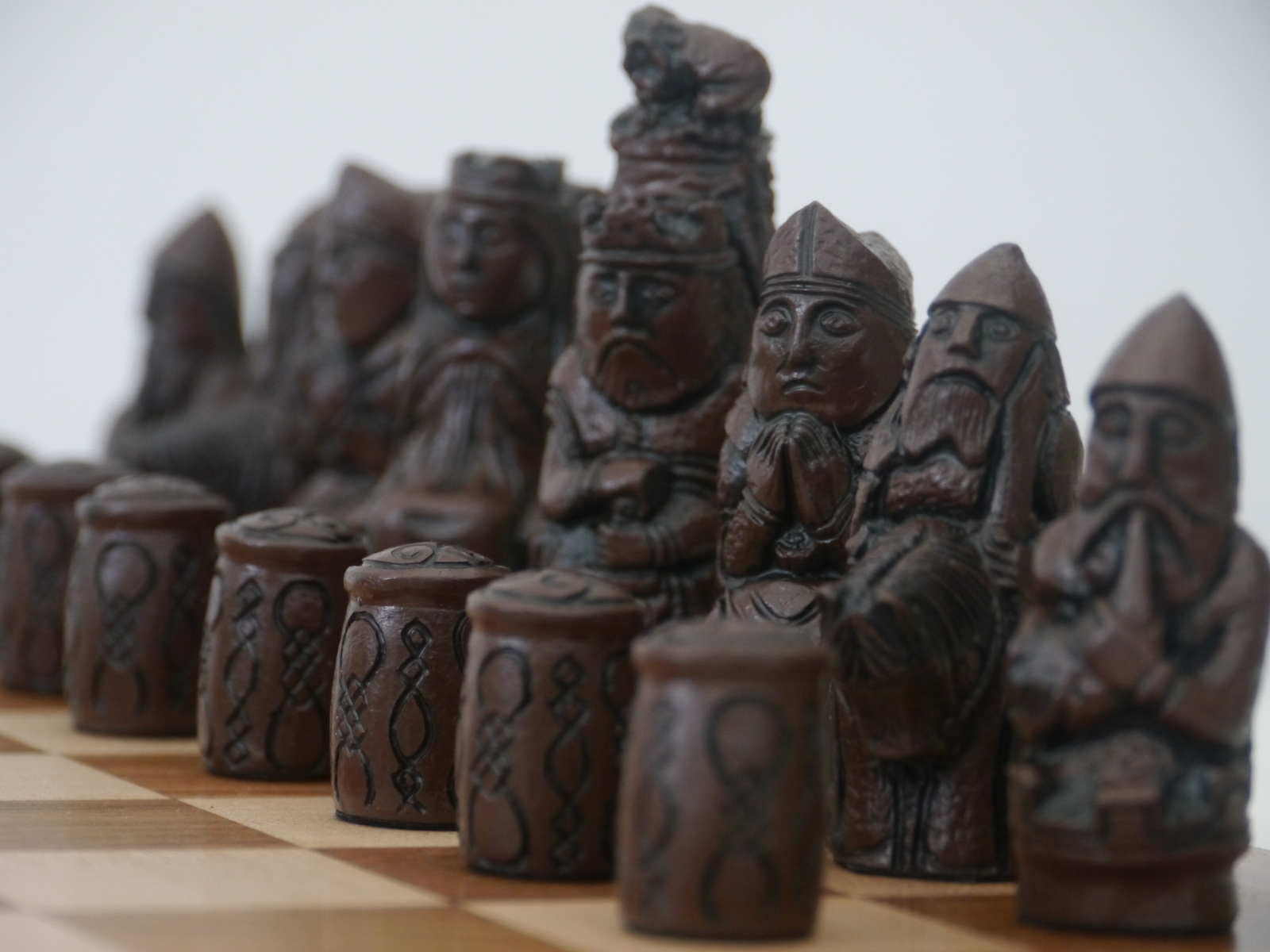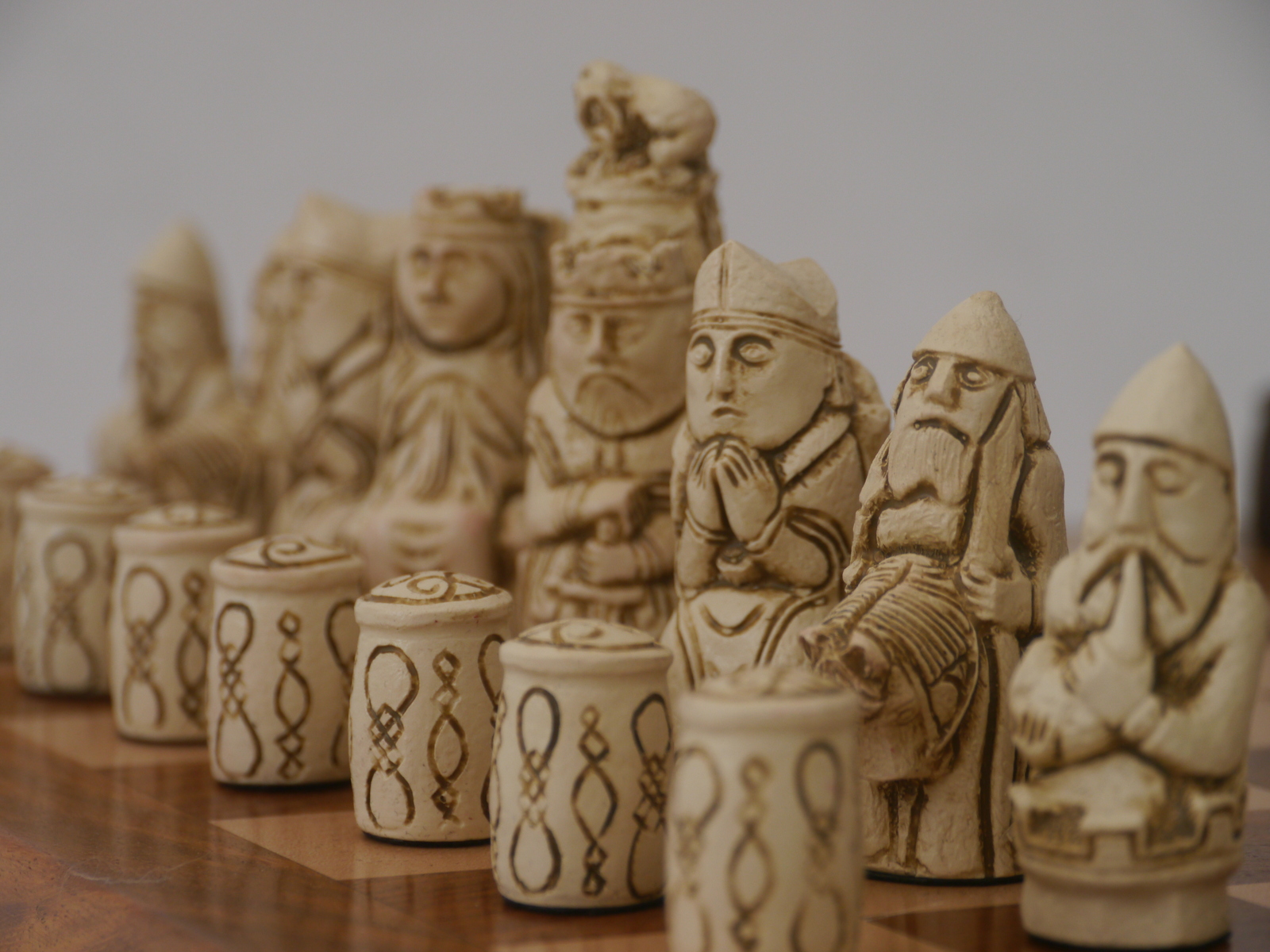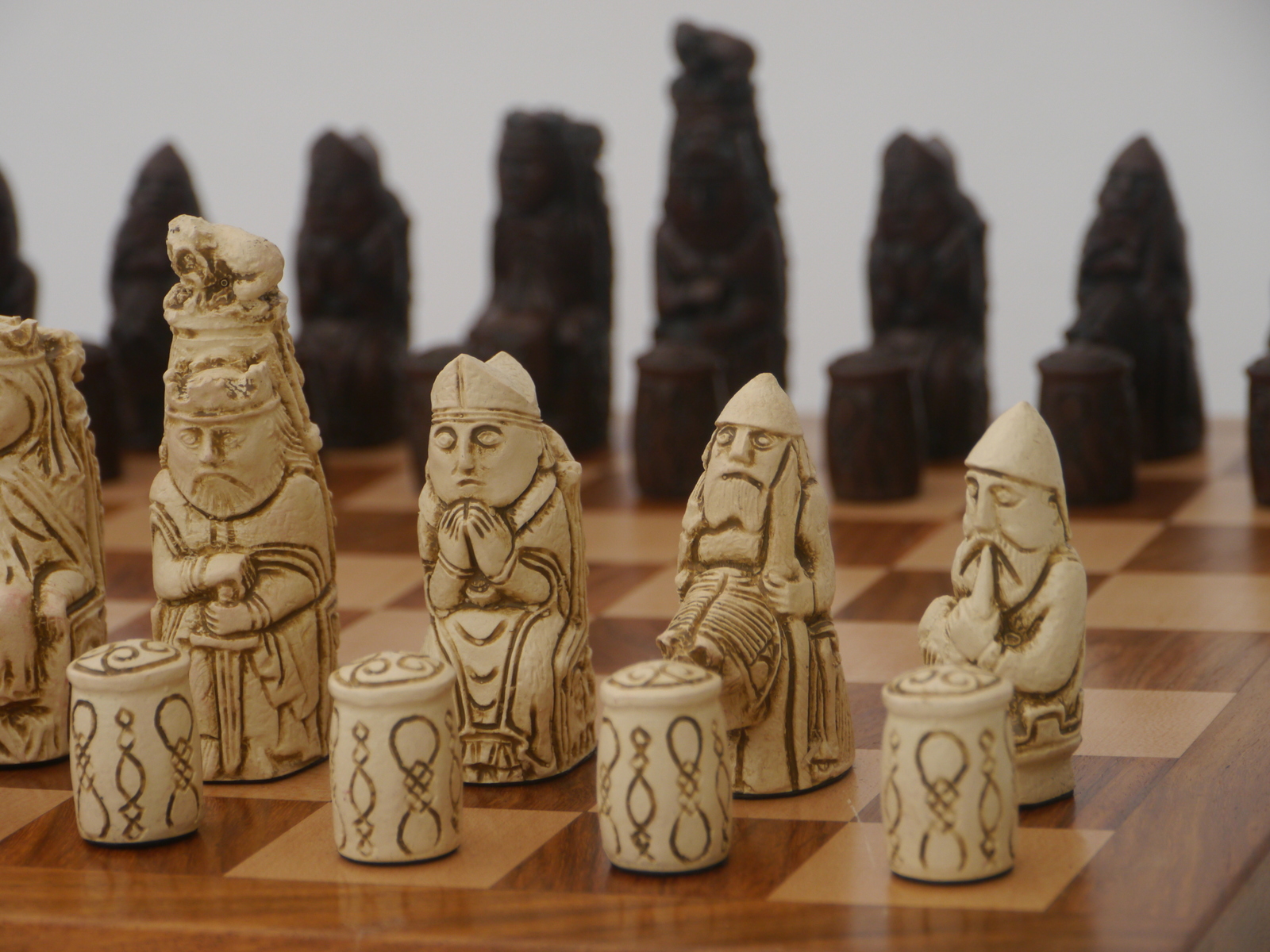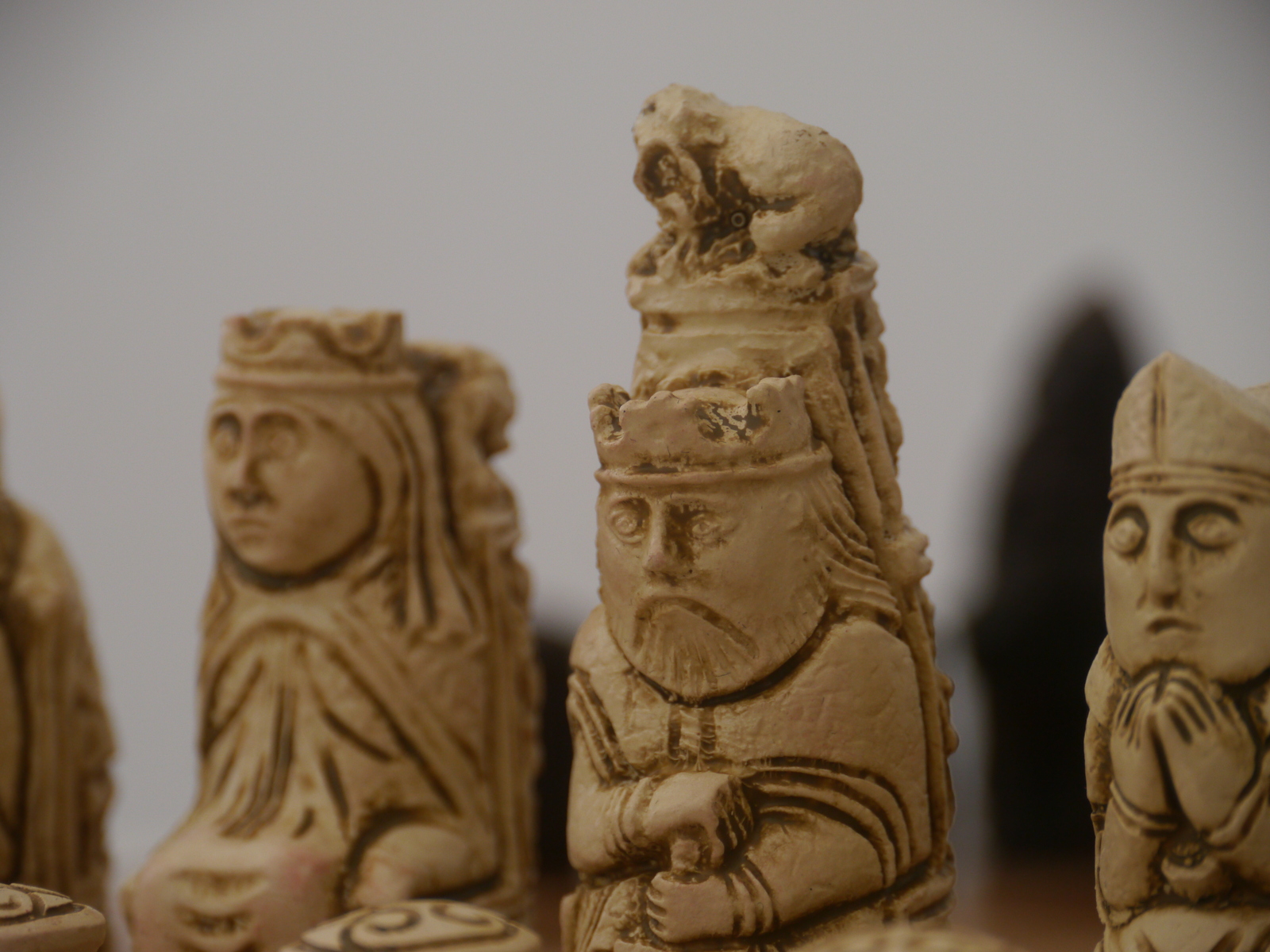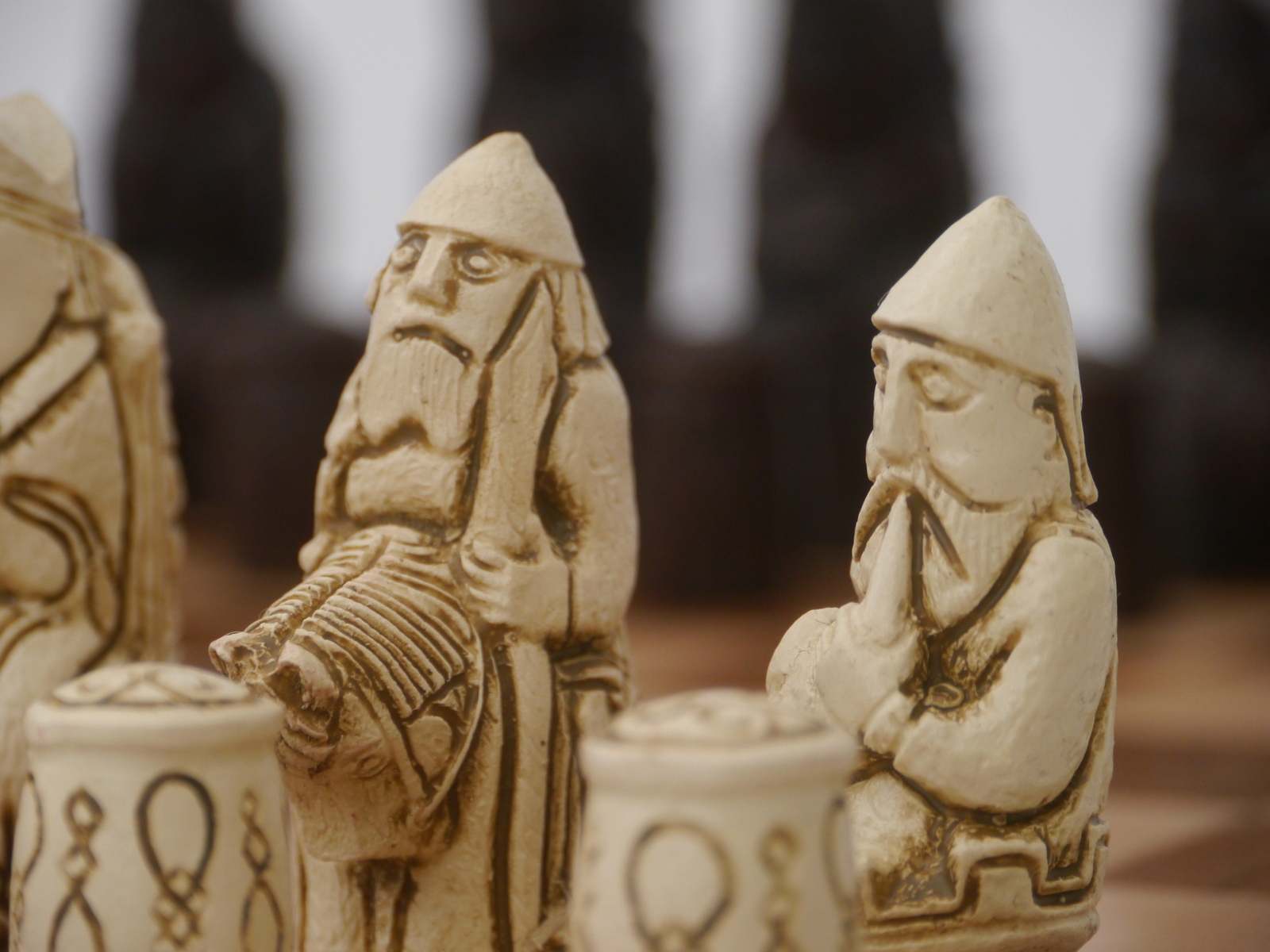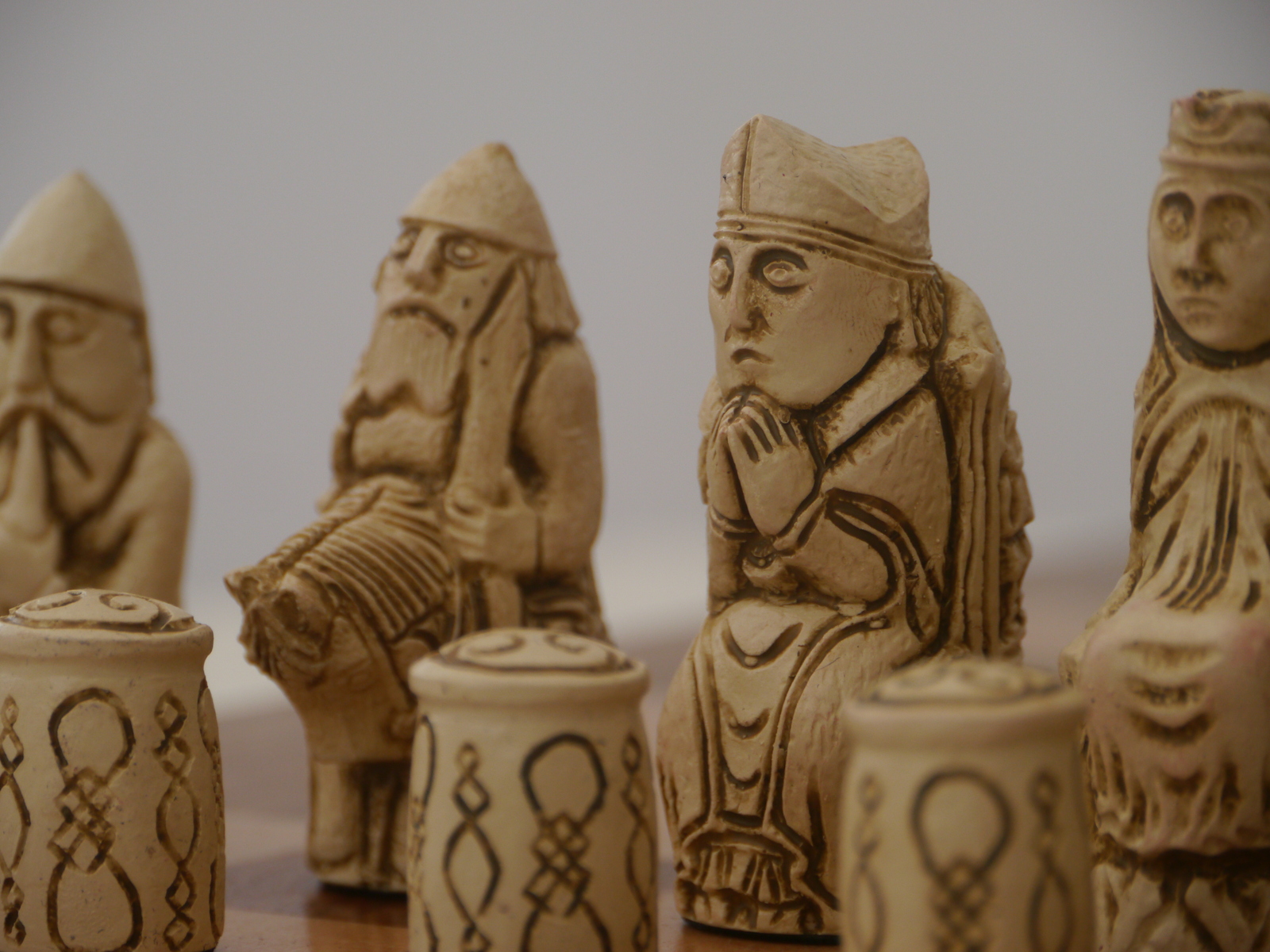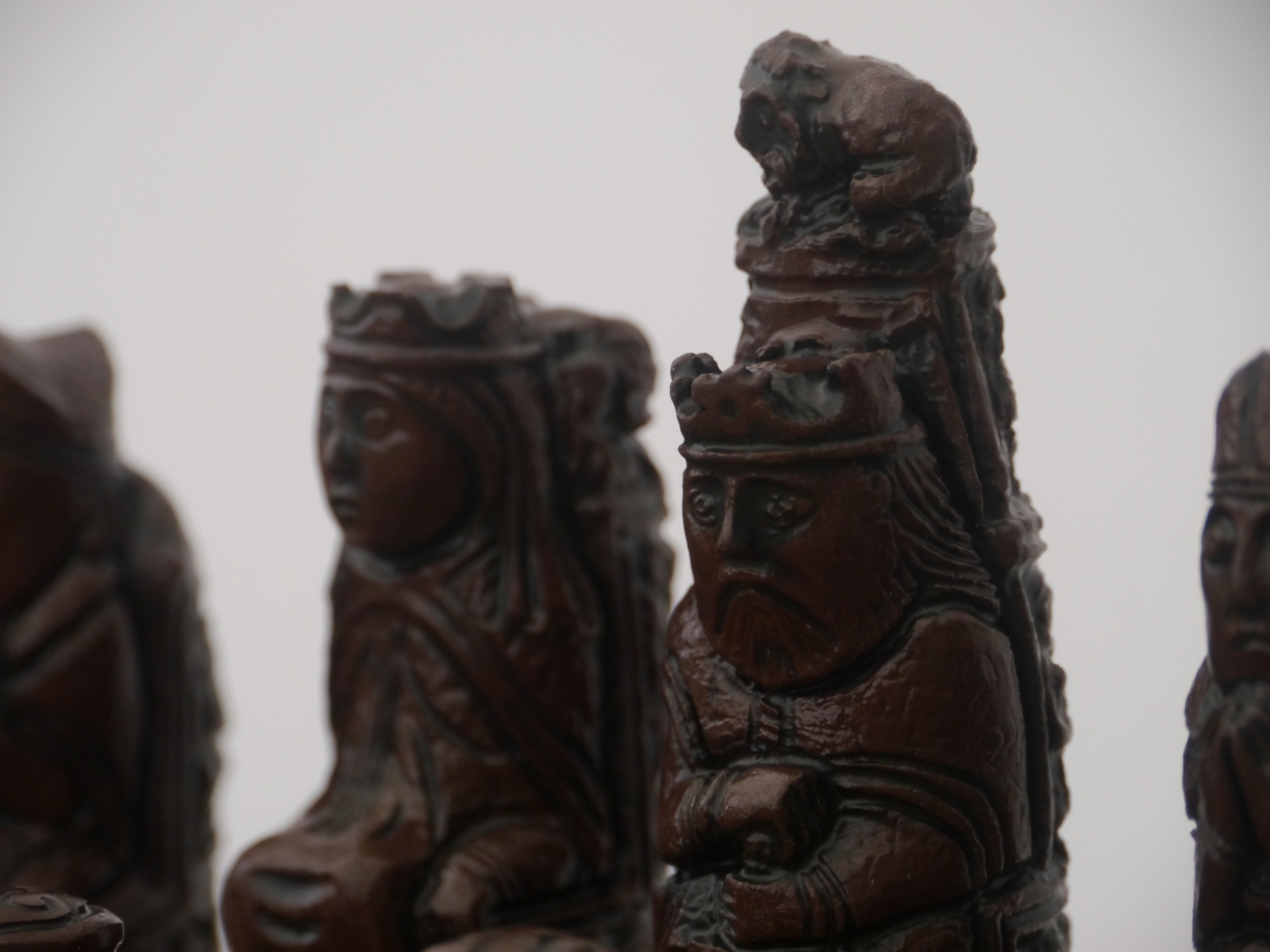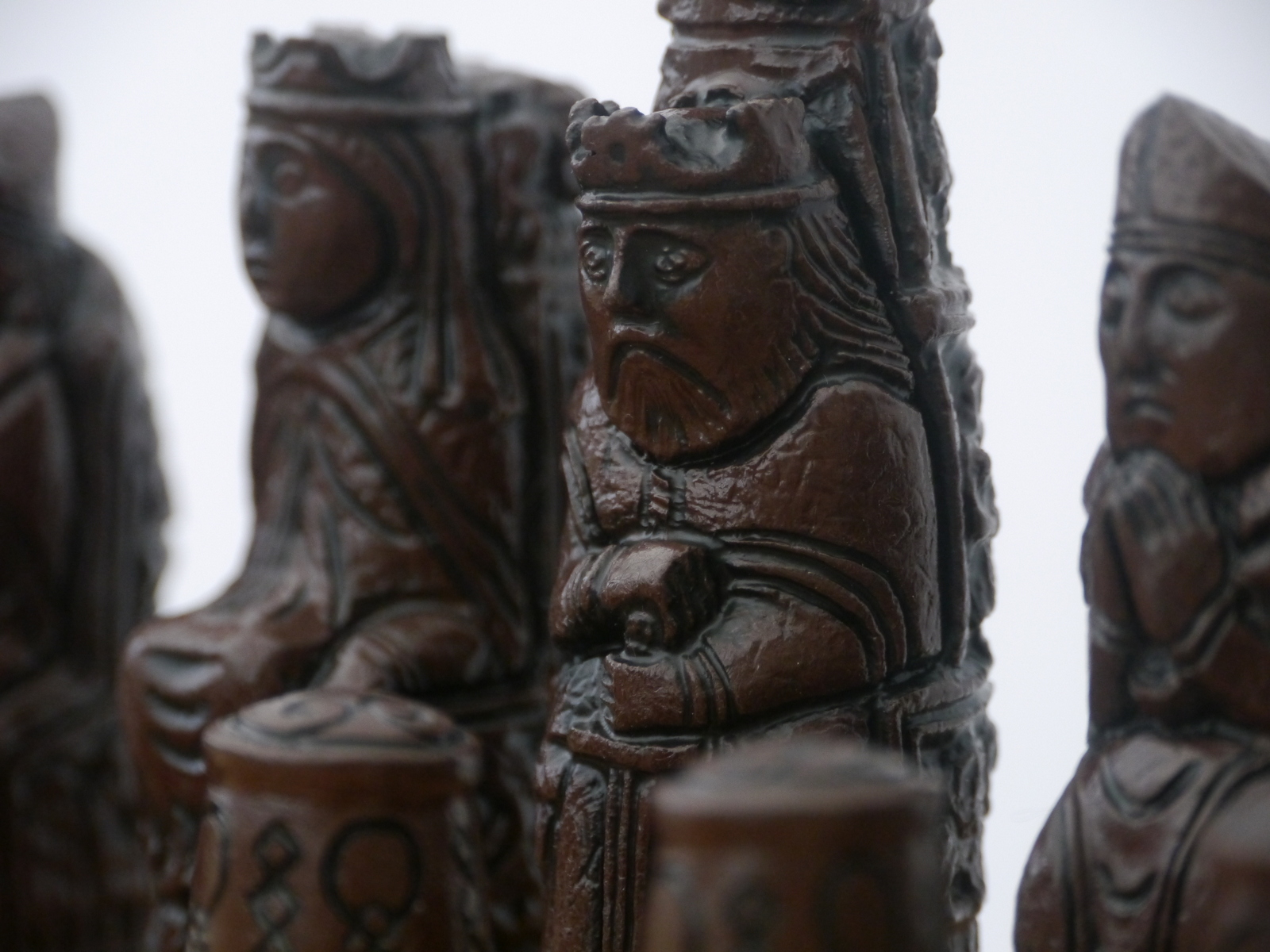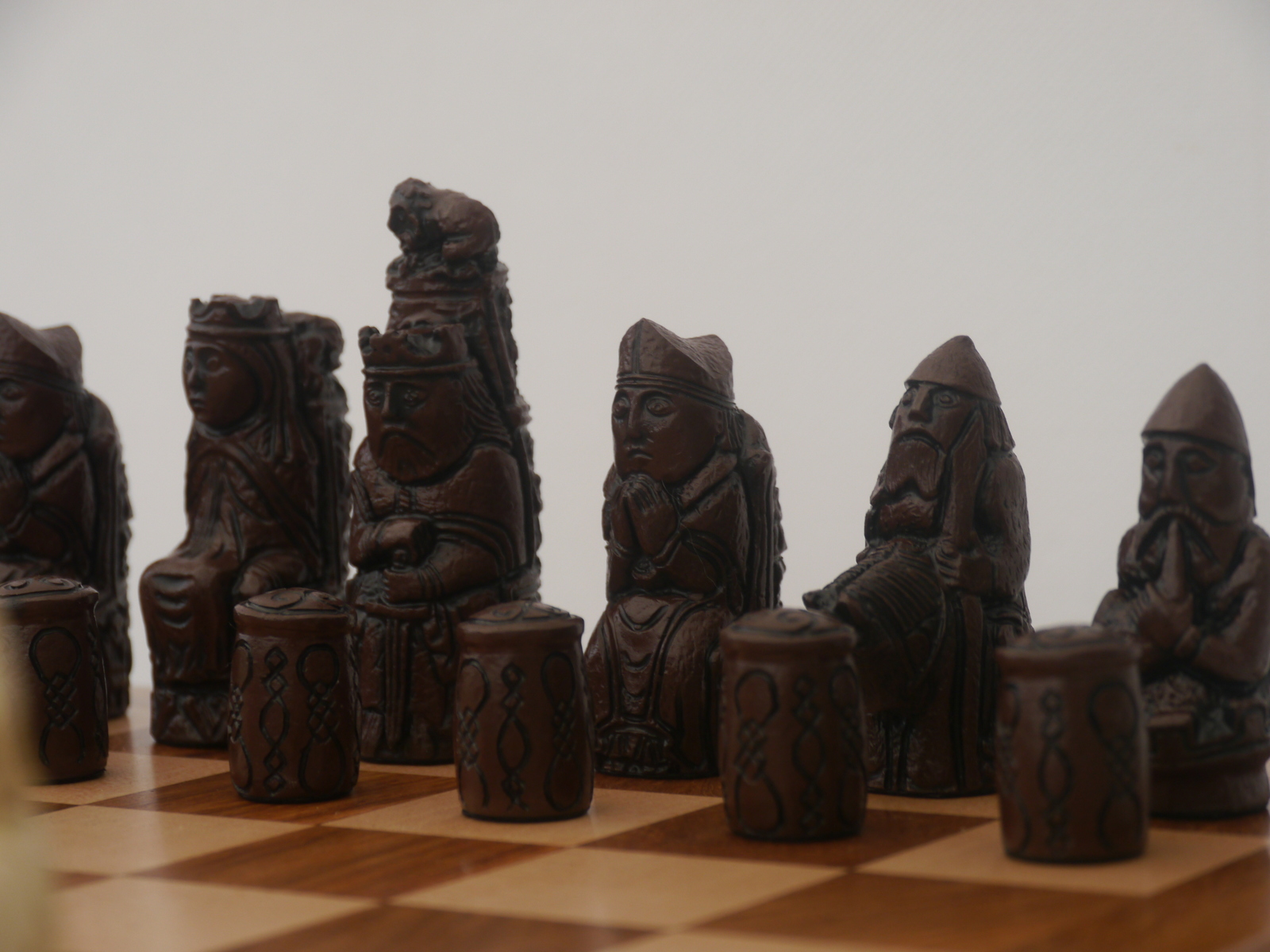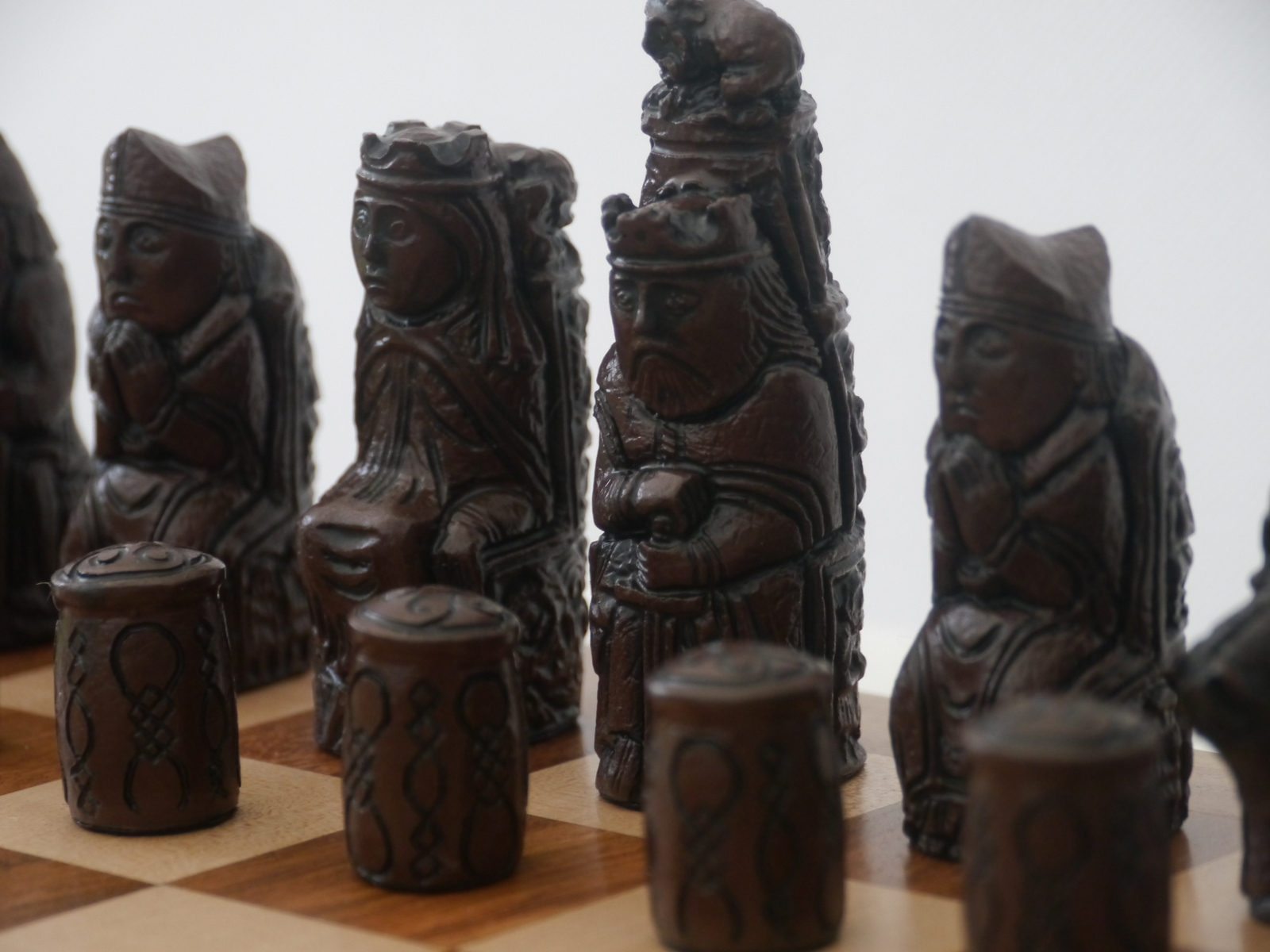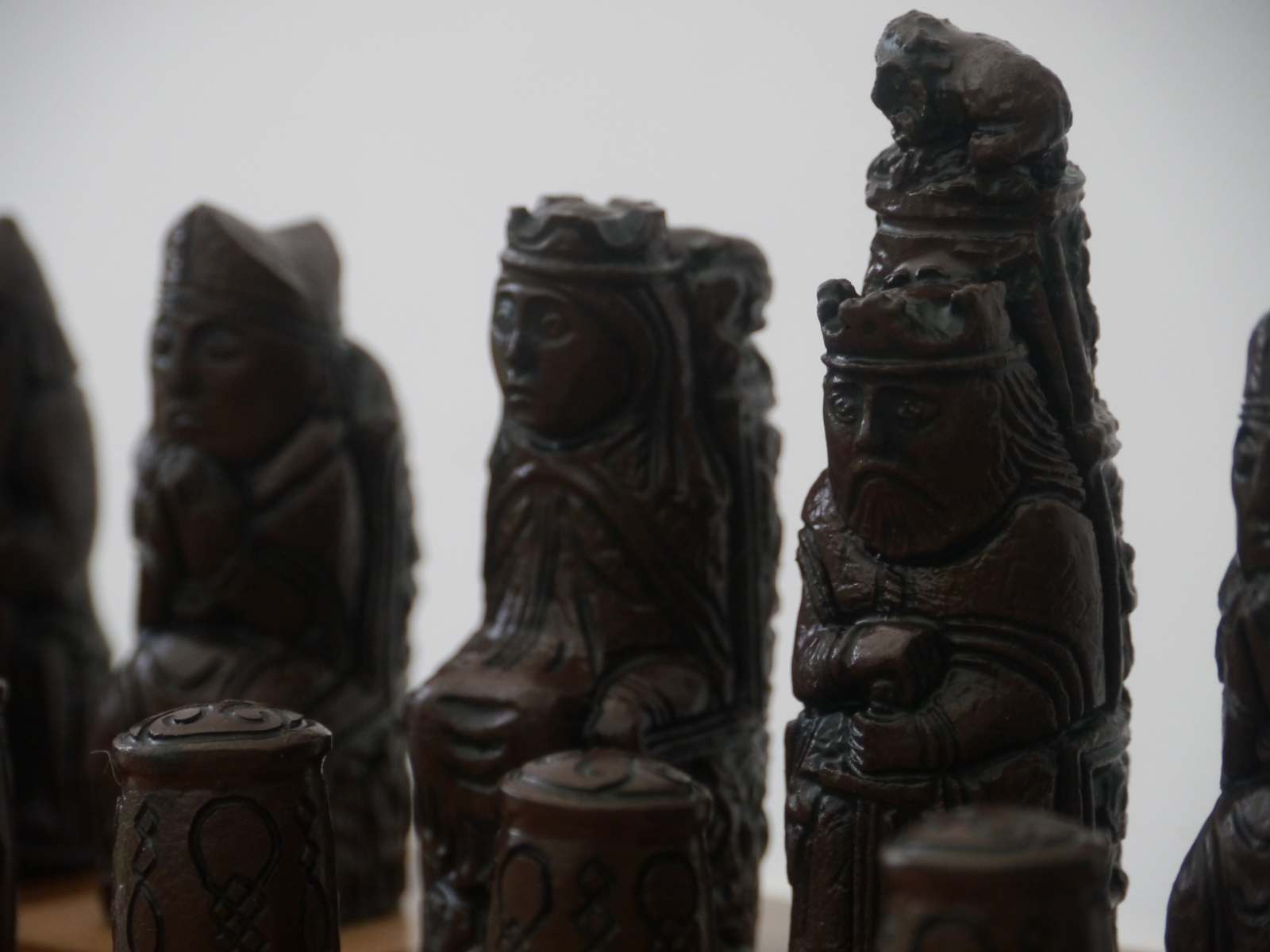BC2002: Medieval – Brown
The Middle Ages or Medieval Period designates the time span from the collapse of the Roman Empire to the Renaissance and Reformation, and the adjective “medieval” refers to whatever was made, written, or thought during the Middle Ages. The Middle Ages was a period of enormous historical, social, and linguistic change, despite the continuity of the Roman Catholic Church. In literary terms, the period can be divided into the Anglo-Saxon period (c. 450-1066), the Anglo-Norman period (1066- c. 1200), and the period of Middle English literature (thirteenth and fourteenth centuries).
From the early origins of chess in 6th century India chess pieces have taken on many forms. Arguably the Isle of Lewis chess pieces are the best known from Medieval times which were made in Trondheim, Norway. They were made of walrus ivory and whales teeth. Some historians believe the Lewis chessmen were lost after some mishap at sea, when some goods from Norway were being sent to wealthy Norse settlements in Ireland. The Lewis pieces were found in March, 1831 in an underground chamber on the west coast of the Isle of Lewis (Uig Bay) in the Outer Hebrides islands of Scotland. A local peasant, Calum nan Sprot, who was looking for his cow, found a small chamber 15 feet below the top of a sandbank that had been partly washed away. The shepherd was terrified by the expressions on the pieces and fled from the spot. He told his minister, Alexander MacLeod, who returned to the sight and exorcised the site, then sold the pieces (67 chessmen and 14 plain draughtsmen) to the British Museum for 84 British pounds.
There were however many other well known Medieval chess pieces and another early chess set is the so-called Charlemagne chessmen, which is in the Cabinet des Medailles, Bibliotheque Nationale in Paris. It is a massive elephant ivory carving. Charlemagne probably never played chess. The so-called Charlemagne chessmen were at the Saint Denis Abbey near Naples since the end of the 13th century. The pieces are dated around 1100 and were probably made in Salerne, Italy. The pieces may have come to Paris as a gift to French King Philip II or Phillip III. Both kings stopped in Salerne. In 1598 there were 30 pieces. In 1794, after the French Revolution, there were 16 pieces. The set consists of 2 kings, 2 queens, 4 elephants, 4 knights, 3 chariots, and 1 foot soldier. A piece that is part of the Charlemagne set is a King Elephant. It carries an Arab inscription which translates as “made by Yusuf al-Bahilis.” Its origin is India and it may not even be a chess piece. It has an Eastern leader being carried by an elephant, surrounded by a row of horsemen acting as supporters.
In the Salisbury and South Wiltshire Museum is a 12th century English chess king (king on horseback) carved of walrus ivory. It is probably the earliest authentic English chess piece known. The piece was found in the drainage channels – the old open sewers that ran through the streets of Salisbury.
The Museum of National Antiquities in Stockholm, Sweden, contains five chess medieval pieces. One is an ivory rook found on the Island of Oland. Another is a 13th century knight, crudely carved from walrus ivory, found at Kalmar Castle, Smaland, Sweden. Another piece is a 13th century bishop carved from walrus ivory, found at Stegeborg Castle, Ostergotland. Another piece is a 13th century walrus queen found at Vastergotland, Sweden. The final piece is a 13th century walrus rook found in Stockholm.
To commemorate this rich history Berkeley Chess have produced this stunning Medieval Chess Set based on a 14th Century German set. The reverse side of the King’s throne shows warriors, the Queen’s throne ladies in waiting and the Bishop’s throne holy men and musicians. In the Rook can be seen the beginning of the introduction of the Castle into early European Chess.
Metrics: BC2002 Medieval – Brown. King Height 3.75″ (9.5cm). King Dia 1.4″ (3.5cm). King Weight 85g (3oz)
Download High-Resolution Images of this model

